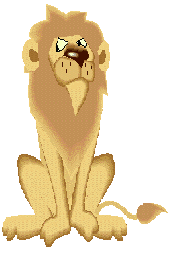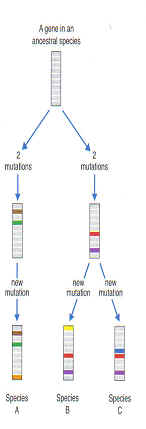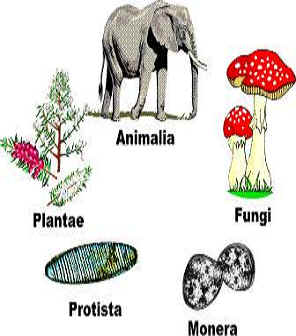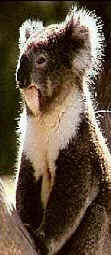3.
The scientific name for this animal is
written:
A. Panthera Leo
B. panthera Leo
C. Panthera leo
D. Panthera leo
4.
To which SPECIES do lions belong?

Image from:http://www.kidskonnect.com/Lions/lion.gif
CLASSIFICATION
REVIEW
Use paper and pencil to answer the following. We did this in class
1.
The branch of biology that groups and names organisms is called
________________.
2.
Linnaeus’s system of classifying that includes grouping organisms in taxonomic
levels and giving each a TWO PART scientific name.
|
3.
The scientific name for this animal is
written:
A. Panthera Leo
B. panthera Leo
C. Panthera leo D. Panthera leo 4.
To which SPECIES do lions belong? |
 Image from:http://www.kidskonnect.com/Lions/lion.gif |
 Image from: http://facstaff.uww.edu/wentzl/cladogram_1.gif |
5. This diagram that shows
evolutionary relationships is called a _______________.
6.
The characteristics used to group organisms |
7.
The taxonomic level that is larger than kingdom is _____________.
8.
Name the 7 taxonomic levels in Linnaeus’s hierarchy in order from largest to
smallest.
9.
An
organism’s evolutionary history
= ____________________
10. Which part of a scientific name is always capitalized?
|
11. This method of comparing
the DNA sequences of organisms to estimate how long ago they have been separated
is called a ___________________. 12.
Which of the organisms in this diagram do you think are the most closely
related?
|
 Image from: BIOLOGY by Miller and Levine; Prentice Hall Publishing; ©2006 |
 Image from: http://analyzer.depaul.edu/astrobiology/kingdoms.jpg |
13. Which of these original 5
kingdoms has been split into 2 bacterial kingdoms? 14.
Name the two kingdoms it has become. |
16.
Which DOMAIN includes all the living things that have a nucleus in their cells?
17.
Name the Kingdom that includes unicellular prokaryotes WITHOUT peptidoglycan in
their cell walls that live in extreme environments.
18.
Name the Kingdom that includes organisms like mushrooms that have chitin in
their cell walls.


 Images from: http://www.gifs.net http://bestanimations.com http://www.earlylearning.ubc.ca/links.htm |
19.
To which KINGDOM do organisms like these belong?
|
20.
Archaebacteria that “like to live in HOT environments” are called
______________.
21.
Name an organism that would be found in the DOMAIN EUKARYA and KINGDOM PLANTAE.
22.
Name the 6 Kingdoms used by scientists today to classify organisms.
23.
Which kingdom includes the most diverse group of organisms because it contains
any eukaryotes that don’t fit in the fungi, animal, and plant kingdoms?
24.
Prokaryotes with peptidoglycan in their cell walls belong in the KINGDOM
_____________.
25.
Group of similar families in Linnaeus’s system.
26.
Molecule found in the cell walls of PLANTS
that make them different from
eubacteria and fungi.
27.
Name the Greek philosopher who first organized living things into TWO groups…
plants and animals.
|
28.To
which kingdom do these organisms belong?
|
 |
29.
Name the gene found on both humans and yeast that suggest these two organisms
have a common ancestor.
30.
Organisms in the Archaebacteria kingdom belong in the ______________ domain.
 (FYI: Koalas have opposable thumbs!) |
31. USE THE DICHOTOMOUS KEY BELOW
TO
DETERMINE THE OFFICIAL SCIENTIFIC NAME OF THIS ORGANISM. 32.
To which GENUS does this organism belong? |
Image and Dichotomous Key from: http://www.students.ed.qut.edu.au/n2364379/MDB377/DichotomousKey.html
1a
This organism has an
exoskeleton - go to question 2
1b.
This organism has an endoskeleton or no skeleton - go to
question 3
2a. This organism has thin black body and a red sripe on it's abodomen
- go to question 4a.
2b. This
organism has a thick black body with large grey/brown abdomen
- go to question 4b.
3a. Organism dwells on land - go to question 5
3b.
Organism dwells in the ocean - go to question 6
4a. Organism is called Latrodectus
hasselti
4b.
Organism is called Atrax
infensus
5a. Organism is totally covered in smooth scale-like skin
- go to question 7
5b.
Organism has a textured coat or covering - go to question 8
6a. Organism 8 thick legs or tentacles - go to
question 9a.
6b.
Has many string-like legs or tentacles - go to question 9b.
7a. Scale-like skin is patterned in horizontal stripes over the
body - go to question 10a.
7b.
Scale-like skin has one block colour over most of it's body
- go to question 10b.
8a. Has fine fur-like covering - go to question
11
8b.
Has feather-like covering over most of it's body - go to
question 12
9a. Organism is Hapalochlaena
lunulata
9b.
Organism is Chironex
flecken
10a. Organism is Psuedonaja
texilis
10b.
Organism is Pseudechis
porphyricus
11a. Has two opposing thumbs on the front paws - go to
question 13a.
11b. Has no
opposing thumb on the front paws - go to question 13b.
12a. Has large bone-like structure on a bald, blue-skinned head
- got to question 14a.
12b. Has
feather-like covering over head with no bone-like structure - go
to question 14b.
13a. Organism is Phascolatarctos
cinerus
13b.
Organism is Vombatus
ursinus
14a. Organism is Casuarius
casuarius
14b.
Organism is Dromaius
novaebollandiae